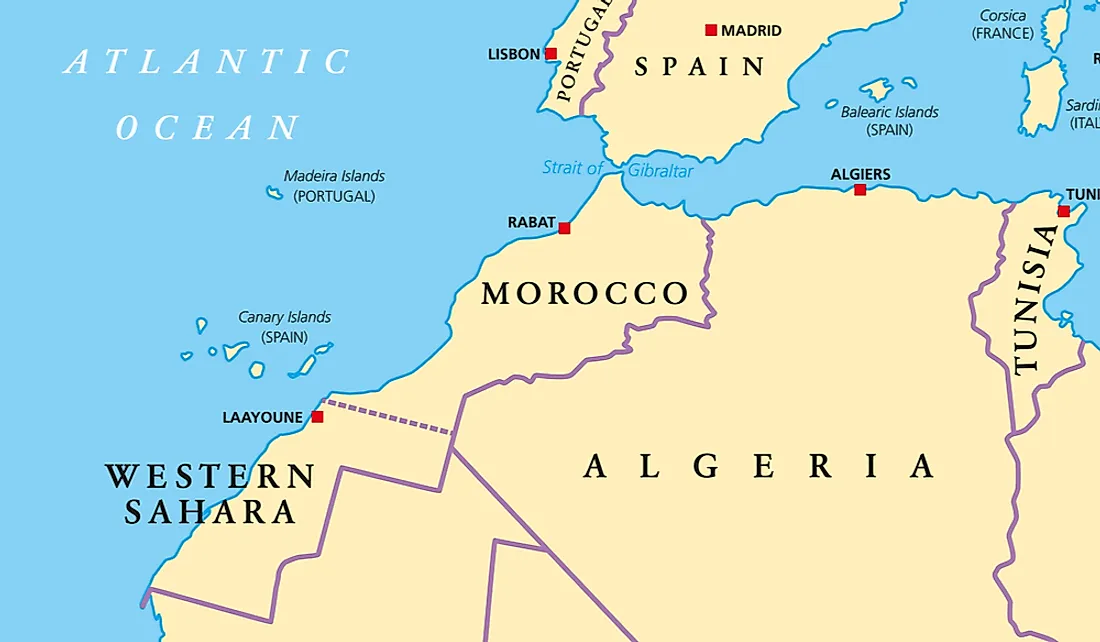Western Sahara: a Country or Part of Morocco?

Western Sahara is a disputed non-self-governing territory in northwest Africa. It is sandwiched between Morocco to the north, Algeria to the northeast, Mauritania to the south and east, and the Atlantic Ocean to the west. The territory is contested by the Kingdom of Morocco and the Polisario Front based in Algeria.
Recognition of Western Sahara
The United Nations considers Western Sahara a non-decolonized, non-self-governing territory. The territory was formerly known as Spanish Sahara until 1976 when the Spanish colonists withdrew paving the way for annexation by Morocco. The occupation sparked a guerrilla war between Morocco and Algeria's Polisario Front that ended in 1991 after the United Nations negotiated a ceasefire and deployed a peacekeeping force. The UN planned to hold a referendum to determine whether the people of Western Sahara would integrate into Morocco or remain independent but the poll did not take place because the parties failed to agree on voter eligibility. From the 1980s, citizens of Morocco migrated and settled in the contested territory resulting in periodic ethnic tensions between the immigrants and the native Sahrawi population.
Administration of Western Sahara
Morocco controls 75% of Western Sahara, but the Polisario Front recognize Brahim Ghali as the president. In 1976, the Front created the Saharan Arab Democratic Republic (SADR) and established a government while in exile in Algeria. Ghali was elected the president of SADR in 2016 after the death of Mohamed Abdelaziz Ezzedine. He is a seasoned military leader who was among the founding members of the Polisario front and led the resistance against the Spanish occupation of Western Sahara.
Demography of Western Sahara
Western Sahara was inhabited entirely by the Sahrawi nomads until the mid-twentieth century. The migration pattern was based on the unpredictable rainfall and did not coincide with the colonial or international boundaries. However, the native population has been compelled to adopt an urban lifestyle due to the presence of constant clashes, minefields, cultural change, job opportunities, prolonged drought, and the closure of the border with Mauritania. The occupation by Morocco and the subsequent construction of the 1700-mile long defensive berm limited the movement of the nomads. About 80% of the population live in urban environments of whom 40% live in Laayoune.
Moroccan immigrants have altered the size and composition of the population as more people continue to migrate to the region. The country maintains a significant military presence in the territory and encourages its citizens to settle by offering pay raises, bonuses, food and transport subsidies, and tax exemptions. The Moroccan Kingdom also encourages the integration of the native by providing job opportunities, better pay, and construction of infrastructure. As of 2018, the population of Western Sahara was approximately 540,000.











